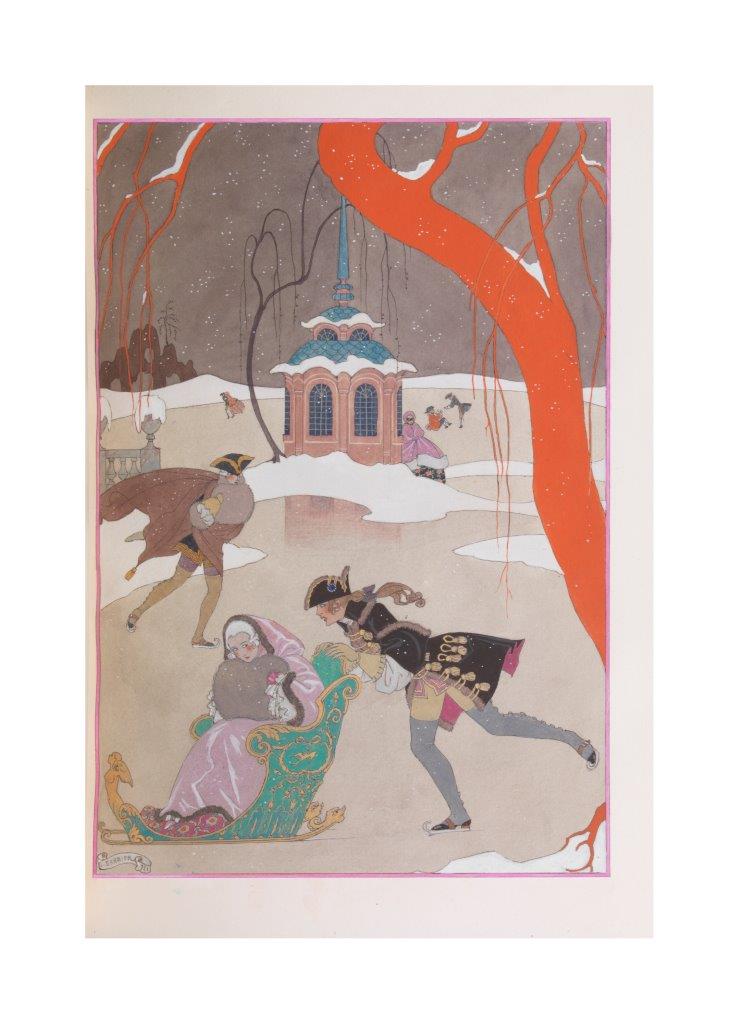
- Paris: H. Piazza et Cie, 1928
- Printed on imperial Japanese paper;Jansenist binding in dark blue morocco leather, with back covers decorated with gold and silver fillets
- Inv. LM426
- No. I, unique copy containing all of the original watercolours for the illustrations; one of the 25 copies printed on imperial Japanese paper
‘Fêtes galantes’
Illustrations by George Barbier (1882–1932)
Binding signed by Georges Cretté (1893–1969)
The collection of poems assembled under the title Fêtes galantes was first published in 1869. Their author, Paul Verlaine, a Symbolist poet, explores themes such as seduction and an erotically-driven frivolity through imagery relating to musicality, masquerades and parties. This provides a suitable setting for the writer to explore the ambiguity of amorous feelings, ranging from euphoria to despondency.
The volume in the Gulbenkian Collection, a carefully preserved bibliophile’s volume, contains all of the original watercolours by George Barbier which formed the basis for the illustrations printed on two trial proofs, one in colour and the other in black and white. The visual language used by Barbier, who worked as an illustrator of fashion magazines and a theatre and film designer, reinterprets the theme of the fête galante, evoking the settings of Watteau, Boucher and Fragonard but updating them according to the Art Deco taste, while never losing sight of Verlaine’s words. Imbuing his work with idealised beauty, the illustrator does not neglect to reference the most libertine and seductive features of the characters, along with the qualities of excessiveness and sense of humour that are so typical of the Comedia dell’arte.
Calouste Gulbenkian request to Georges Cretté, Marius-Michel’s successor and an important figure in the 20th-century French binding, that he ‘dress’ the book must certainly in order to achieve aesthetic cohesion between the text, illustrations and biding. It is worth noting that Cretté opted for a simple design, which earned him the collector’s prompt approval.
Acquired by Calouste Gulbenkian from Giraud-Badin, Paris, 11 January 1937.
Paris 1997
O Livro Objecto de Arte. Colecção Calouste Gulbenkian, França. Séculos XIX-XX. Paris: Calouste Gulbenkian Cultural Centre, 13 March to 29 May 1997, p. 158–9, cat. 65.